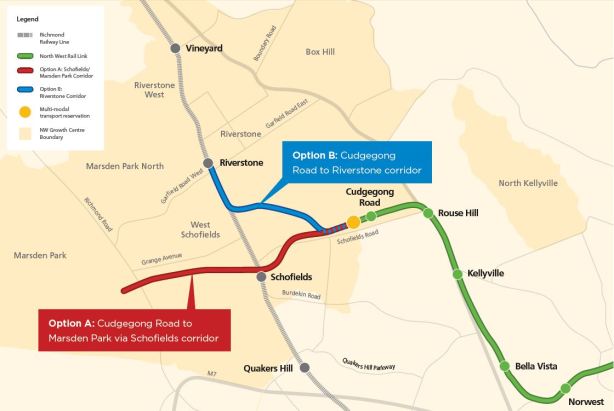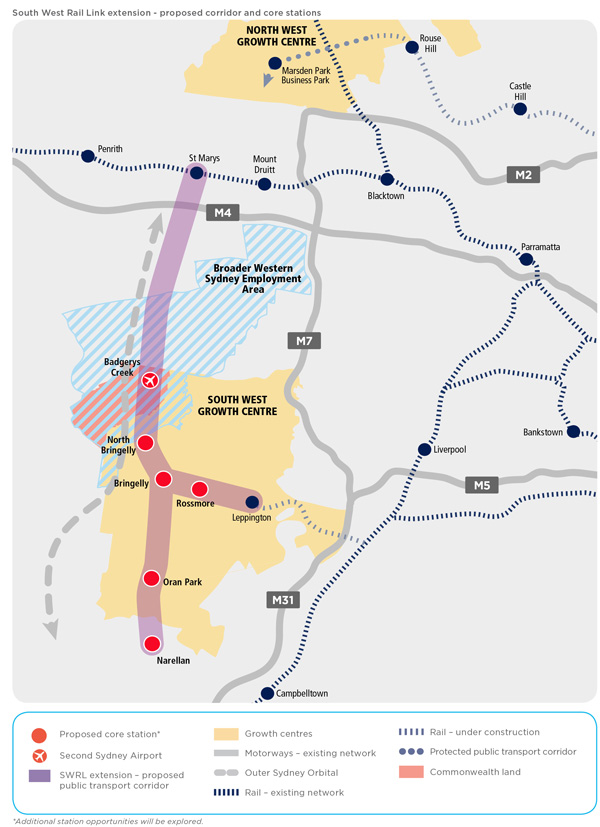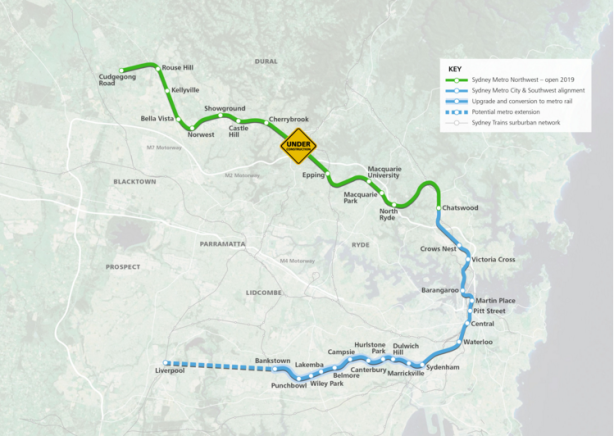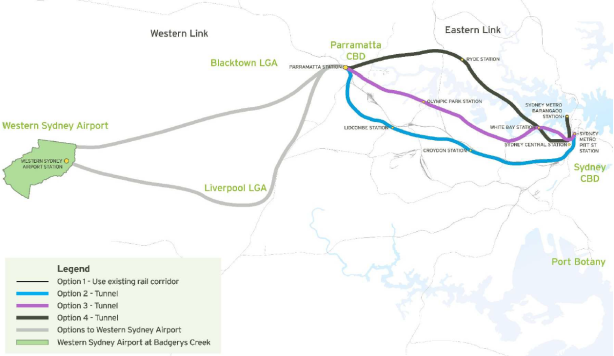VIDEO: Sydney’s New Driverless Train (Sydney Trains Vlog)
12 months ago the NSW Government had already committed to the creation of a light rail network around Parramatta and an extension of the Sydney Metro from Chatswood to Sydenham. But the question remained: which alignments will it choose? At the time, the favourites were a light rail line to Macquarie Park and a metro line via Sydney University.
However, since then the Government opted for a metro line via Waterloo and light rail to Sydney Olympic Park over the previously mentioned alignments. Among the reasons given were the capacity for value capture and the potential for development of new homes.

Parramatta City Council’s proposed 4 light rail lines. Click to enlarge. (Source: Western Sydney Light Rail Network: Part 2 Feasibility Report, p. 6 – no longer available online)
“The light rail corridor will activate a priority growth area and there is an opportunity for the government to share in the value uplift that will occur along the corridor. A Special Infrastructure Contribution will be implemented, with the levy expected to be set at around $200 per square metre of gross floor area of new residential developments subject to consultation.” – Transport for NSW (8 December 2015)
“[Light rail] will be a game changer for Sydney’s second CBD – the preferred route provides the most opportunity for new jobs and urban renewal.” – Rob Stokes, Planning Minister (8 December 2015)
“Waterloo metro station will be the catalyst for the delivery of an additional 10,000 homes and thousands of new jobs in the precinct for families who live in the area.” – Rob Stokes, Planning Minister (16 December 2015)
The first reason given of value capture, involving the contribution to construction costs of new infrastructure by those who benefit from that new infrastructure when their property values rises, is not a new one; but has been gaining in momentum by bureaucrats and politicians at both the State and Federal levels including Prime Minister Malcolm Turnbull. The primary advantage is the ability for new infrastructure to pay for itself, freeing new projects from the constraints of government budgets. The primary limitation is that it tends to be overstated, with Alan Davies arguing that its benefits are modest.

Artists impression of light rail through Sydney Olympic Park. Click to enlarge. (Source: Westline Partnership.)
The second reason given of potential for new development has arisen due to concerns over housing affordability. Government could address this by either curbing demand (such as reigning in negative gearing/reducing capital gains tax concessions) or increasing supply (often by removing constraints on development due to insufficient infrastructure).
The former policies on demand are almost exclusively in the domain of the Federal Government, while the latter on supply are almost exclusively in the domain of the State Governments. These pressures have shifted Government policy making in recent years, with decisions made based on what will maximise housing construction.

Sydney Metro will include a station at Waterloo, which will also see the Waterloo area undergo significant urban renewal. Click to enlarge. (Source: Transport for NSW.)
The net result of all of this is a change in Government priorities. The new priority is all about how to enable the construction of the most housing possible, at the lowest cost to Government possible.
Each of these feeds into the other. Additional housing construction provides additional stamp duty revenue to the Government. Lower net costs allows more infrastructure to be built resulting in more potential housing.
However, it has also meant that transport goals have fallen in priority. In these cases that translates into less connectivity for Sydney and Macquarie Universities as well as Macquarie Business Park.
Chalk it up as a win to the Planning Department and a loss to Transport for NSW.



